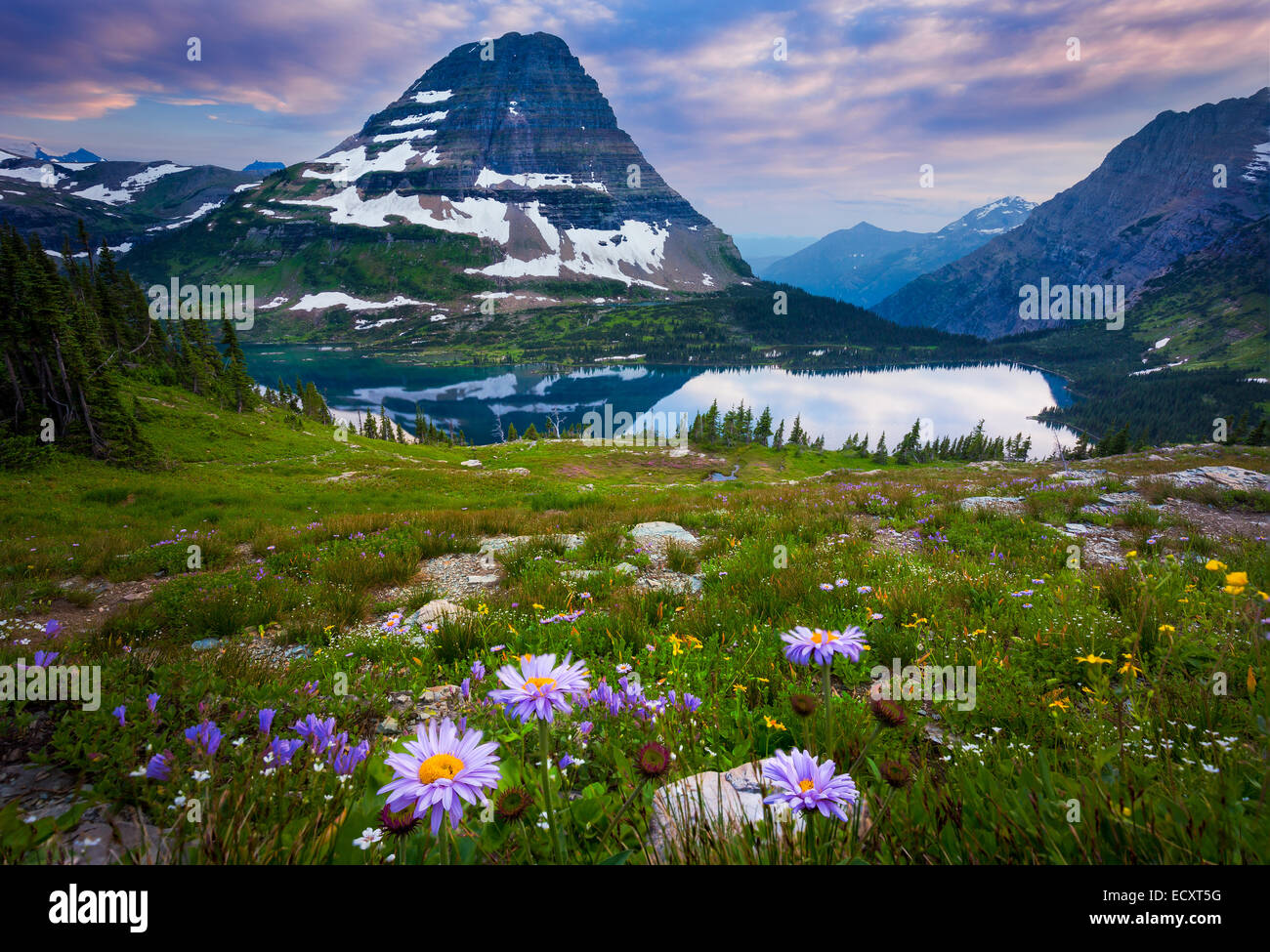Hidden Lake is located in Glacier National Park, in the U. S. state of Montana.

Image details
Contributor:
Inge Johnsson / Alamy Stock PhotoImage ID:
ECXT5GFile size:
56.9 MB (4.1 MB Compressed download)Releases:
Model - no | Property - noDo I need a release?Dimensions:
5403 x 3681 px | 45.7 x 31.2 cm | 18 x 12.3 inches | 300dpiDate taken:
2 August 2014Location:
Glacier National Park, Montana, United StatesMore information:
Hidden Lake is located in Glacier National Park, in the U. S. state of Montana. Hidden Lake is surrounded by numerous peaks including Bearhat Mountain to the southwest, Clements Mountain to the north and Reynolds Mountain to the east. Hidden Lake is a popular day hike destination with the Hidden Lake overlook a 1.5 miles hike from Logan Pass and the lakeshore adding another 1.5 miles one way. Glacier National Park is a national park located in the U.S. state of Montana, on the Canada–United States border with the Canadian provinces of Alberta and British Columbia. The park encompasses over 1 million acres and includes parts of two mountain ranges (sub-ranges of the Rocky Mountains), over 130 named lakes, more than 1, 000 different species of plants, and hundreds of species of animals. This vast pristine ecosystem is the centerpiece of what has been referred to as the "Crown of the Continent Ecosystem", a region of protected land encompassing 16, 000 square miles. The region that became Glacier National Park was first inhabited by Native Americans. Upon the arrival of European explorers, it was dominated by the Blackfeet in the east and the Flathead in the western regions. Soon after the establishment of the park on May 11, 1910, a number of hotels and chalets were constructed by the Great Northern Railway. These historic hotels and chalets are listed as National Historic Landmarks and a total of 350 locations are on the National Register of Historic Places. By 1932 work was completed on the Going-to-the-Sun Road, later designated a National Historic Civil Engineering Landmark, which provided greater accessibility for automobiles into the heart of the park. The mountains of Glacier National Park began forming 170 million years ago when ancient rocks were forced eastward up and over much younger rock strata. Known as the Lewis Overthrust, these sedimentary rocks are considered to have some of the finest fossilized examples of extremely early life found anywhere on